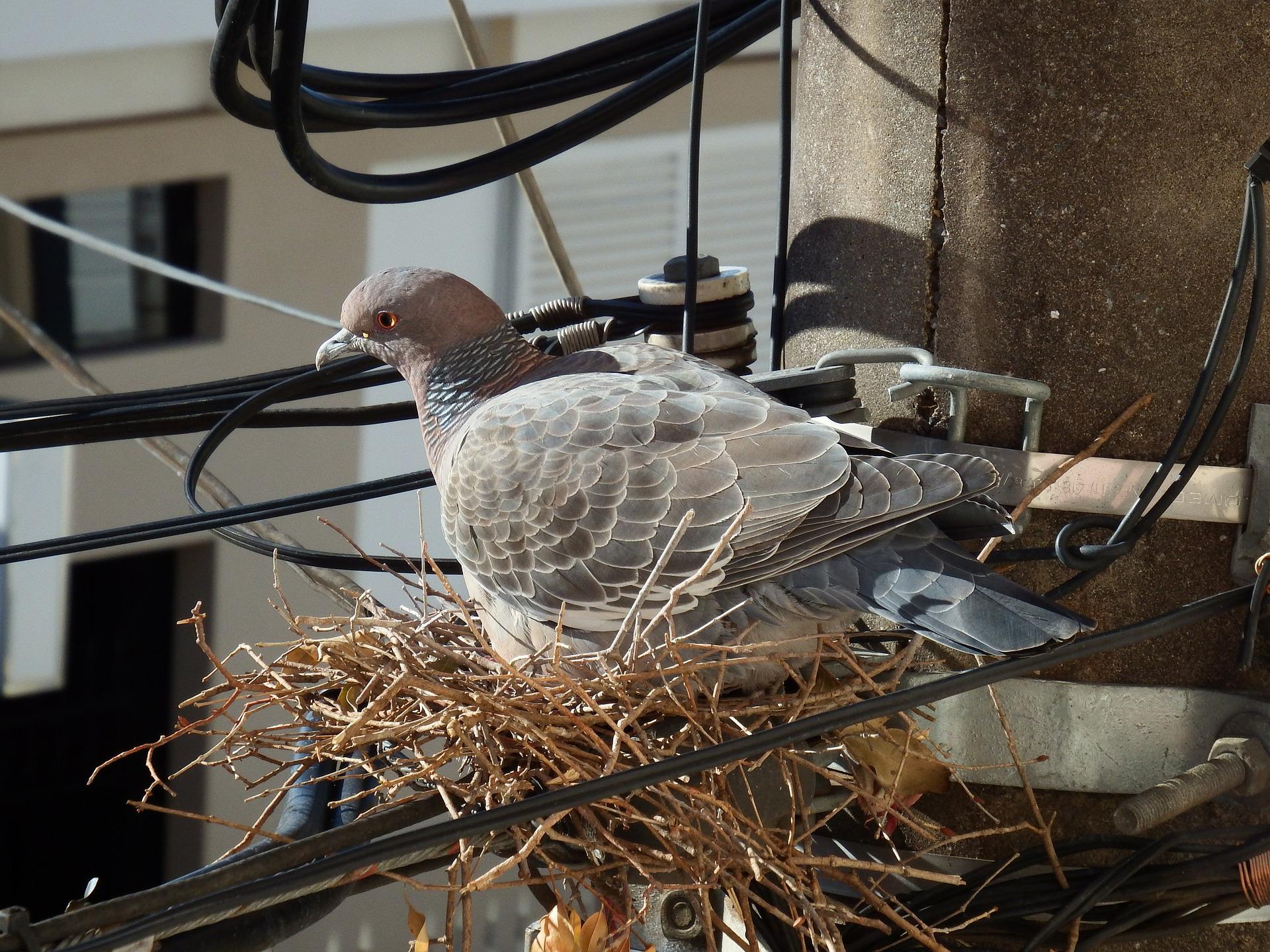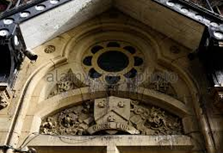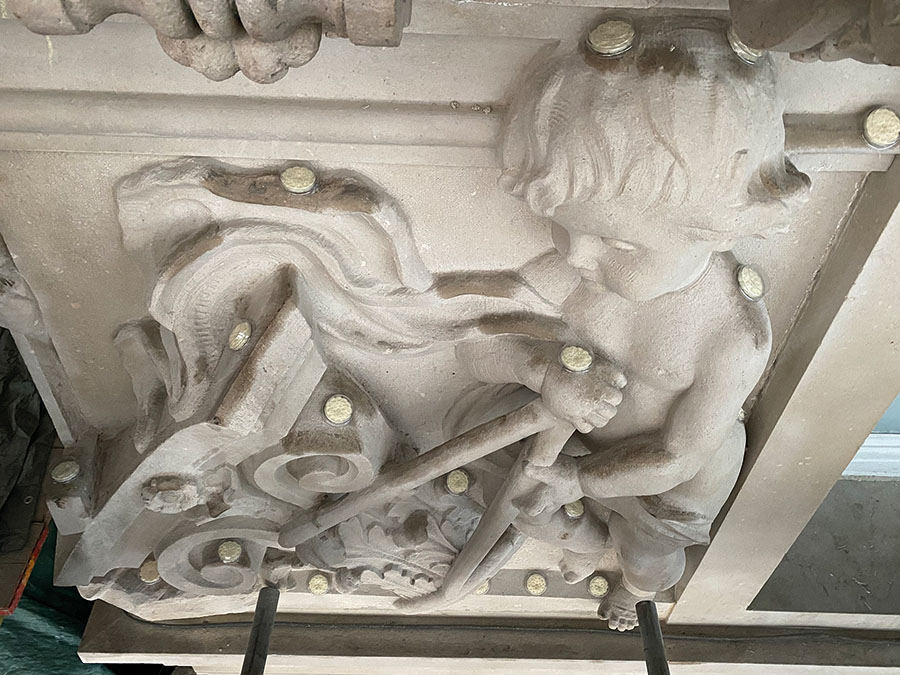Michael Palin warns of pest threat to churches
 Michael Palin is supporting the future of the UK’s historic churches and chapels with a voiceover for a new animated film.
Michael Palin is supporting the future of the UK’s historic churches and chapels with a voiceover for a new animated film.
The 80 second animation, produced for the National Churches Trust, highlights why churches are some of the nation’s best loved buildings.
It also shows some of the dangers facing church buildings. These include leaking roofs, crumbling stonework and the dreaded Deathwatch Beetle, Xestobium rufovillosum.
The Deathwatch Beetle is a serious wood-boring pest which can cause major damage to church timbers. When an adult, the beetles produce a rapid tapping sound by beating their heads against wood as a mating call.
Michael Palin said: “Churches and chapels are fascinating and sometimes surprising places to visit. They are rich with history and stunning architecture and also places for quiet reflection and venues for concerts, exhibitions and even beer festivals.

Call in professionals if nesting birds pose a problem
Birds can cause a range of issues during nesting season, but interfering with wild birds, their eggs or nests could lead to prosecution, a national trade body has warned.
British Pest Control Association (BPCA) is urging Parochial Church Councils to seek professional advice if birds are becoming a problem.
Click here for the full story
“But sadly many are threatened by leaking roofs, crumbling stonework - and even death watch beetles.”
Michael Palin says that people who want to save historic churches for the future can support the work of the National Churches Trust by joining its Friends scheme.
Becoming a Friend of the National Churches Trust costs as little as £30 a year. All Friends can take part in events, talks and tours of historic churches and help to keep more of the UK’s fantastic church buildings alive for future generations.
www.nationalchurchestrust.org/membership
Pest Bird Damages
A problem that carers and keepers of churches and historic buildings may not predict is bird damage and liability caused by pest bird infestation. However, there is one very important difference between a lot of other hazards and a pest bird problem - whilst you cannot predict it, you can prevent your bird problem!
Pest birds leave their droppings on walkways, walls, rooftops, equipment, and more. Bird messes contaminate pond water and clog drainage vents. Birds seem to play target practice with cars parked in outdoor lots. But it is not just an issue of filth – pest bird damage is actually a serious problem for listed buildings, churches and statues.
Bird droppings are the most common issue, causing walking surfaces to become slippery and dangerous. Droppings are also linked to over 60 transmissible diseases (some even potentially fatal). In outdoor eating areas like picnic tables, sanitation can also be a real concern.
Droppings are extremely corrosive and can cause irreversible damage to property and equipment. When the messes are not quickly washed away, the droppings dry out and turn to salt and ammonia; when they later come into contact with rainwater, small electrochemical reactions take place that speed up the rusting process. This acidic substance can eat away at paint, concrete and metal, and can even cause structural failure.
Birds themselves can also interfere with the safety of the building causing fires, pecking holes in roofing, interfering with power cables, while significantly increasing the need for repairs and replacements that cost time and money.

Pest Bird Prevention
While some changes such as altering the landscaping may help, greatest success comes with a combined approach including bird deterrents. When choosing a bird control solution for your facility, look for a company that offers products that are humane and eco-friendly. The use of harmful chemical pesticides can put customers and workers in danger, while using traps or poisons that harm or kill pest birds is inhumane, messy, and unsanitary – which is very bad for visitors and your reputation.
The ideal solution is to use green bird control products. These include bird spikes, netting, visual scares, and sonic/ultrasonic devices that deter birds from roosting in specific areas, as well as electronic devices that can also rid the premises of rodents, bats, spiders, and other pests by way of a bonus.
Investing in bird control will save precious funding otherwise spent on cleanup and repair.
By allowing birds invade your building you can put occupants and visitors at risk for various health issues. In order to keep birds from invading your personal and professional space, it’s important to recognize how they can invade your building and what you can do about it.

Insect Pests in Churches
Every year many of our churches fall prey to the attention of insect pests. Not only can the fabric of the buildings be affected but also the valuable and often irreplaceable contents. Yet all too often, insect pest control is a reaction to the discovery of evidence of pest activity. With pests, the old adage: ‘Prevention is better than cure’ certainly rings true.
"The control of insect activity in churches is key to their proper care and use”, explains The Right Reverend Graeme Knowles, Chairman of the Council for the Care of Churches.” Historic timberwork and fragile objects like textiles and manuscripts, are often irreversibly damaged by moths, furniture beetle and death watch beetle. This is a serious loss to congregations and church visitors. The Council for the Care of Churches seeks to advise parishes and Dioceses on adequate and efficient responses to this problem and supports conservation works to ensure the preservation our ecclesiastical heritage."
“The main problem pests commonly affecting timber structures in churches are death watch beetle (Xestobium rufovillosum), and these pests is invariably associated with damp conditions and in order to get control of them it is necessary to address the damp problem. The situation is therefore generally more complicated than just controlling the pests and specialists with experience in wood preserving and damp proofing are likely to be needed to assess the situation and deal with that side of the problem.”
Death watch beetle on the other hand is confined to the old timbers found in churches, attacking hardwoods such as oak and elm. Damage can be severe resulting in total failure of load bearing beams. The adults are 6 - 9mm in length and brown with yellow scales. Their name comes from the tapping sound they make in warm weather between March and June. The larvae take four to 10 years to mature and adult exit holes are much larger than woodworm holes – up to 3mm in diameter. They prefer to attack wood that has been damp and has some fungal growth and therefore beams which are in contact with soil, damp walls or roof beams which are damp from leaks are most at risk. The insects will emerge after many years and then spread into uninfested timber in the building structure.
Ventilation units
Though they typically cannot enter your building through vent itself, if birds nest around the ducts, they can still have a terrible impact. Parasites and particles from their droppings, nesting material and food can cause serious damage to people and property alike.
Hazards: blockages, Stench and decay of dead birds, loose birds in the building, chemically damaging bird droppings personal health issues (bird fancier’s lung, tuberculosis, allergens, etc.), and parasites (which can eat cloth and cause health problems in people and pets)
Solution: Electronic bird repellents, Bird netting,
Chimneys
Often found in listed buildings and some churches. When you’re not using it, these neighborhood pests may choose to utilize this unused space. One day when you least expect it, you just may come face-to-face with a fowl intruder.
Hazards: Loose birds in the building, bird droppings (which, when dried out by heat, can turn into a toxic particulate), personal health issues, and parasites
Solutions: Bird spikes, bird gels and taste aversions
Gutters And Drains
Wild birds also make themselves comfortable in drains and gutters, which can cause water backup during storms and, in turn, water damage both inside, to precious objects, and outside the building.
Hazards: Indoor and outdoor water damage and surface corrosion from bird droppings (gutters, vehicles, etc.)
Solutions: Electronic bird repellents, bird gels and taste aversions
False Economy
Birds can cause irreversible damage to building surfaces costing tens of thousands of pounds worth of damage. Sometimes the structures, such as statues, are irreplaceable.
Employing a professional expert for advice and remediation of the problem will save money, prevent health problems and preserve your beautiful building.
“If you think hiring a professional is expensive, try hiring an amateur” Red Adair.
You can find an expert near you in our online directory here.
Churches and heritage buildings now have a sustainable solution to pigeon fouling
The mess created by pigeons is not only unsightly but, left unchecked, can also cause blockage of gutters and damage to timber and plaster finishes.Churches and heritage buildings are particularly susceptible to pigeon infestations due to their ornate architecture and decorative facades, which provide ideal nooks and crannies for nesting and roosting.
Click here to read the full story.

Dropping knowledge on a delicate issue
All of us have seen a fine building unhelpfully adorned with pigeon food in its (ahem) processed form. Perhaps we assume this is an issue of unsightliness and nothing more, but bird droppings create a host of problems from disease to corrosion and more, especially for heritage buildings.
Click here to read the full story.















